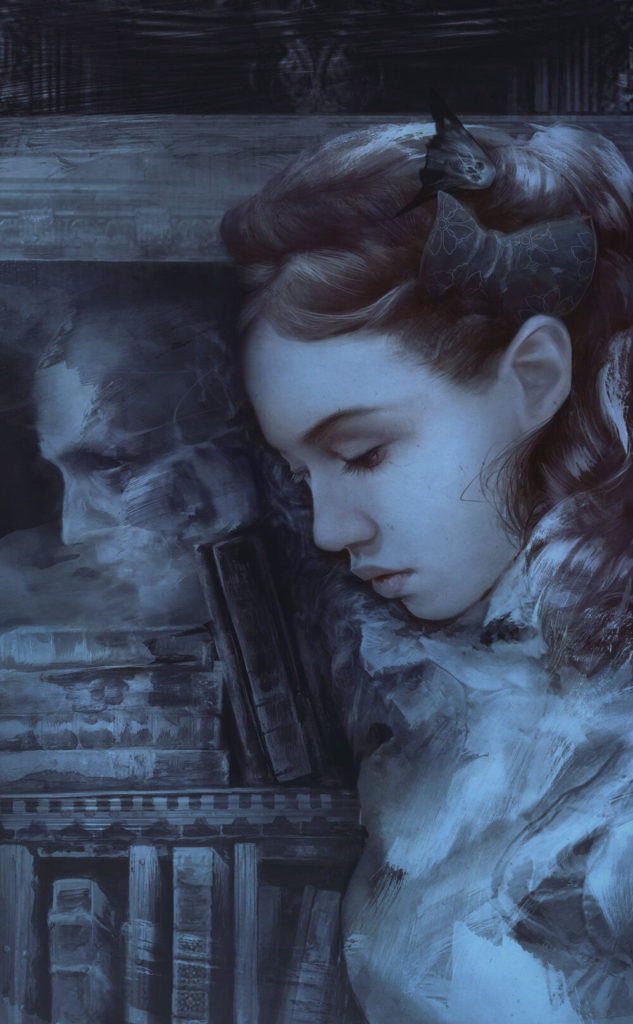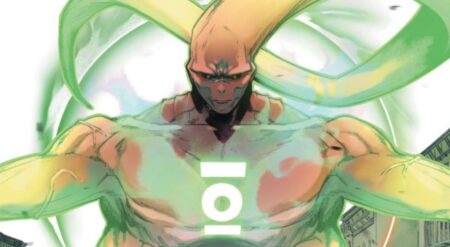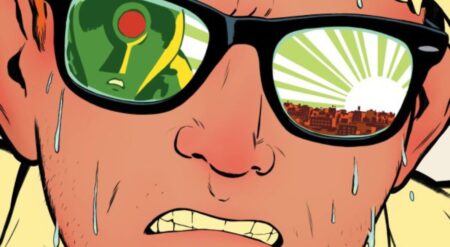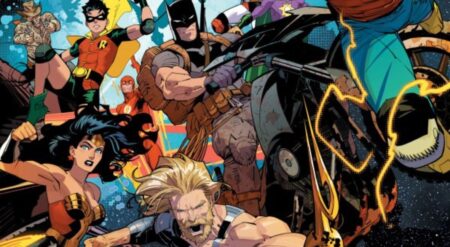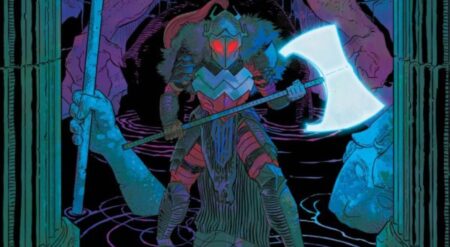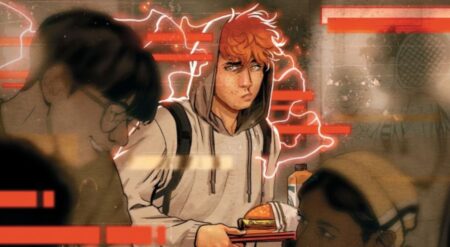
Daphne Byrne is published by DC Comics, as part of Hill House Comics under the DC Black Label imprint, written by Laura Marks, art by Kelley Jones, colors by Michelle Madsen, and letters by Rob Leigh. Daphne Byrne is a troubled young girl. With her father passed away, she and her mother have fallen on hard times. When her mother searches out a seance to allow her to commune with her deceased husband, Daphne’s world takes an unexpectedly dark turn.
Horror is a tricky genre for me. On its surface, the genre seems to focus on scares and the unsettling of its readers. But, as I’ve come to find over the last couple of years, horror is at it’s best when it is being used to delve into deeper things. Societal commentary is often a huge underlying theme to the best horror stories. Because without it, the story feels empty and devoid of any real purpose. A hollow display of the grotesque, and the violent. Daphne Byrne tries to take on some of the aforementioned social commentaries that the horror genre is known for, but in the end, does little with it.
Set in New York in the year 1886, the story plays out in front of the backdrop of the high society of the day. Daphne is mocked by the other girls in her school. This mockery is mostly due to things completely outside Daphne’s control. Her father’s infamous passing has left her mother with debts she cannot handle. Daphne’s situation only worsens when her mother seeks out a seance by the name of Mrs. Swarthmore.
While her mother is completely enthralled by the seance’s claims that she is allowing her to commune with her deceased husband Daphne immediately sees through the rouse. She’s a swindler. But her mother won’t listen. However, while at the seance, Daphne has her first meeting with something supernatural.
Where Daphne Byrne really gets to its core is through Daphne’s interactions with this being. Claiming to be looking out for her, and wanting to help her, she struggles with the things the spirit encourages her to do. This struggle ultimately ends up being the crux of Daphne’s story. And what she learn’s about humanity that makes her come to her ultimate decision.
The experiences throughout Daphne Byrne that shape the protagonist paint a stark picture to be sure. Basically, people are bad. There is no subtlety or nuance to its approach. If someone isn’t out to aggressively hurt you, they are uncaring to your problems in favor of whatever is going on in their worlds. Such as her mother’s neglect of Daphne while she chases hopes of speaking to her husband.
Due to this blunt hammer approach, Daphne Byrne less says anything about society and more feels like it’s just being emo about it. It speaks a lot but says little. Instead, it leans into the grotesque side of the horror genre, as Daphne is shown other aspects of the world, and what she can be in it.
And the various monstrous visages that grace the pages here are captured quite well visually. Jones’ art makes these scenes appropriately chilling. Twisted, walking cadavers and undead ghouls are portrayed skillfully here. The dark airs of the story is further aided through a well-chosen color palette by Madsen.
Lastly, we have the lettering. Letterer Leigh does a commendable job delivering the story in a clear and easily followed way.
When all is said and done Daphne Byrne delivers a shallow walk through the horror genre. Delivering some chilling imagery and the blunt force message that people suck. While there is some value to that, there are plenty of examples of the horror genre delivering a lot more bang for the buck.
Daphne Byrne is available now wherever comics are sold.
‘Daphne Byrne,’ Trade Paperback
TL;DR
When all is said and done Daphne Byrne delivers a shallow walk through the horror genre. Delivering some chilling imagery and the blunt force message that people suck. While there is some value to that, there are plenty of examples of the horror genre delivering a lot more bang for the buck.

